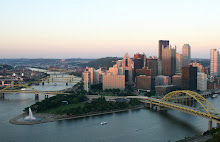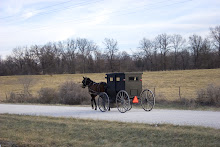 Let’s go to Shiloh, Ohio. Okay. Where is Shiloh, Ohio? What is Shiloh, Ohio? Well, you get on SR 224, and drive west for about a hundred miles and then turn left. It is 10 miles down that country road. Be careful!! The road is “dippy” and you can’t see over the hill down the road apiece. Watch out for the buggies. The Amish are everywhere. Most important, when you get there, don’t blink. It has a railroad track, but still hasn’t installed a traffic light.
Let’s go to Shiloh, Ohio. Okay. Where is Shiloh, Ohio? What is Shiloh, Ohio? Well, you get on SR 224, and drive west for about a hundred miles and then turn left. It is 10 miles down that country road. Be careful!! The road is “dippy” and you can’t see over the hill down the road apiece. Watch out for the buggies. The Amish are everywhere. Most important, when you get there, don’t blink. It has a railroad track, but still hasn’t installed a traffic light.Welcome to small town America, USA. Located on Route 603 in Richland County about 15 miles northwest of Mansfield, Shiloh is the quintessential American small town. I know…we like to think of small towns as places like Salem or Warren. Those aren’t small towns. Those are cities. Shiloh is the real McCoy.
The 2000 census puts its population at about 750 people. It has a main street, a railroad crossing, several churches, and a factory which is going great guns, employing several hundred people. That is down from when I first visited there. The population was 850 way back then. It has its own water and sewer system, and a consolidated school system with the bigger town about 8 miles to the west, Plymouth, Ohio, pop: 1,852; 903 males and 949 females. Plymouth has several traffic lights and a town square. Moving up to the big time.
Seriously, we read about small town America and envision it as someplace in Iowa or Nebraska. The fact of the matter is that Ohio has its fair share of Americana, and it is only a short drive away. Shiloh is farm country. But for those of us from cities like Youngstown and Cleveland with a large ethnic population, it is exotic as anything you will find overseas. My wife is from Shiloh. Believe me, my first trip there was like visiting a brave new world. It was hard to believe I was in the same state.
Some of the “big” cities around Shiloh are Plymouth, Willard, and Greenwich (pronounced Green Witch). Smaller towns also abound like Shenandoah (pronounced Shawnador…don’t ask. I can’t figure it out either!). Towns akin to Salem would be Bucyrus (home of Ohio’s largest Bratwurst Festival), and Shelby, one of the centers of Ohio’s railroad industry.
Located nearby is the “muck” outside of Celeryville. The dirt here is rich and black and wet, and lends itself to growing, you guessed it, celery, as well as any kind of root vegetable like beets, and pretty much anything else you can think of. During harvest season, it is the home for hundreds of Mexican migrant workers. Some of them have found their way to Shiloh. During the season you can see them sitting outside cooking Mexican down home cuisine on grills and outdoor portable ovens.
This is one of the unheralded Amish population centers in the state. The Amish have quietly been buying up all of the local farms, and have made their presence known with buggies everywhere, and their schools and churches scattered throughout the countryside. The Amish store located a few miles outside of town sells dry goods and produce for unbelievably inexpensive prices, and draws people from all over Richland County.
But here’s the thing. If you want to get away from it all, there is no better place. When I would visit my wife’s home located on 40 acres on top of a hill, I could look up into the night sky and see stars as they were intended to be seen. The nights would be perfectly calm and totally quiet to the point where it was eerie. And in the background, you could hear the train and its whistle chugging through the center of town several times each hour. It doesn’t get any better than that.
And here is the other thing. Shiloh has a volunteer fire department, probably the most well equipped volunteer fire department in the state. Each year, it sponsors the Shiloh Ox Roast Festival. Tons of beef in a special seasoning are cooked for hours underground in a pit located on the outskirts of town. And the beef is devoured like nothing you have ever seen before. They start selling the sandwiches on Friday afternoon, and by Saturday night they are pretty well gone. Even the passing trains stop to buy these marvelous beef sandwiches.
In addition to the food which includes homemade baked goods, fries, and roasted corn, there is an old fashioned tractor pull, bingo at the town parlor, and plenty of beer in the VFW hall located next to the tracks.
But the highlight of the Ox Roast is the parade on Saturday night. It is one of the largest in the State of Ohio with floats and bands coming from as far away as Cincinnati and Toledo. The parade will last a good 2 – 2 ½ hours, and the town’s population swells from 750 to a good 20,000. And you would swear you saw Grandpa McCoy and Little Luke sitting in the folding chair in front of my late father-in-law’s barbershop.
I am not sure I would make Shiloh a sole destination when visiting this part of the state. But get a map and do some research, and you will find all sorts of interesting places to visit with a 30 mile radius. Accomodations are few and far between, but Mansfield has the standard chain motels giving you easy access to everything that northcentral Ohio has to offer.
By the way, the Shiloh Ox Roast is the weekend of July 25. More information available at http://www.shilohfire.net/.
Route 224 to State Route 61 south to Plymouth. Route 603 southeast to Shiloh.




